We need to talk about tiny falconets

Bec Crew
Bec Crew

We all know why kittens and puppies are cute – it’s an evolutionary survival mechanism that prevents predators like us from killing them.
But why fierce little assassins like falconets have to look this adorable is anyone’s guess:
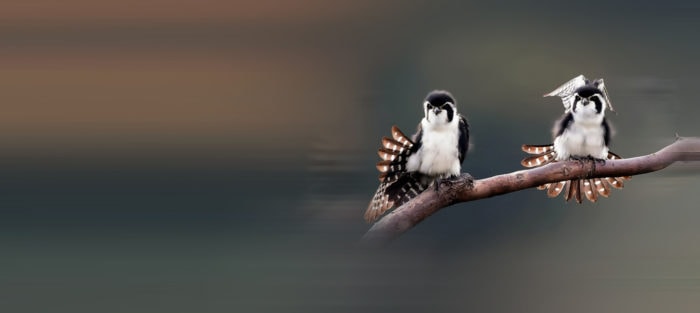
(Image credit: Wang LiQiang)
Falconets are the smallest birds of prey in the world, with the black-thighed falconet (Microhierax fringillarius) from South East Asia being the tiniest of them all.
These diminutive hunters are just 14–16 centimetres long, with a 27–32 cm wingspan, which makes them about the size of a sparrow, or Australia’s minute emu-wrens, which weigh no more than a teaspoon of sugar.
I mean, I don’t want to be patronising. They’re very serious birds with very serious hunting to do. But look how fluffy they are:
Falconet prey is suitably small, ranging from butterflies, moths, and dragonflies, to lizards, cicadas, and even small birds.
Here’s one eating a butterfly (apparently the chicks like these best because they’re so soft):
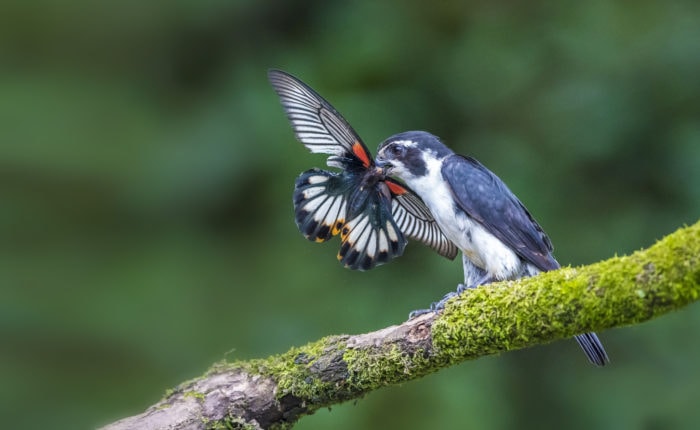
(Image credit: Wang LiQiang)
And here’s another eating a very tiny bat:
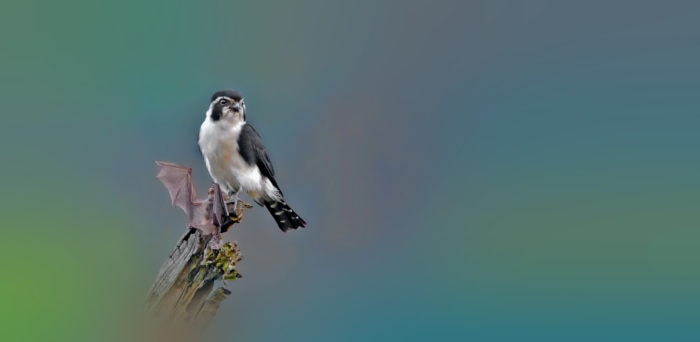
Other than how they look, the most adorable thing about falconets is just how social they are. They’ve been spotted in groups of up to 10 individuals, hanging out on a branch in various stages of the hunt.
Here’s a bunch of seven pied falconets (Microhierax melanoleucos) – found in Bangladesh, China, India, Laos, and Vietnam – socialising on a branch over a couple of leaves:
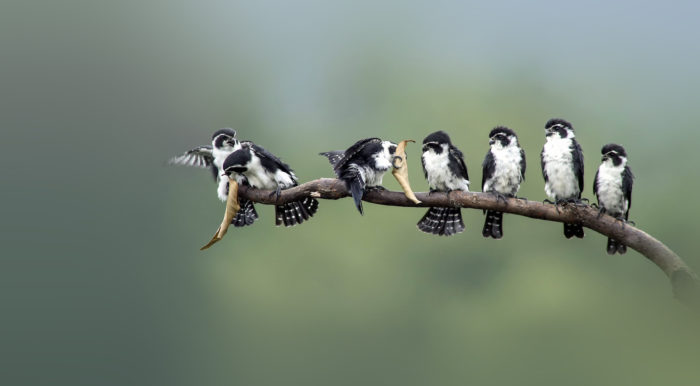
(Image credit: Wang LiQiang)
Leaves are particularly important to falconets – they’re often photographed with leaves in their beaks, and researchers working with pied falconets have suggested that ‘leaf presenting’ is a form of courtship behaviour.
Publishing in the Journal of the Bombay Natural History Society, researchers recorded observations of pied falconets ‘gifting’ dried leaves to each other on three separate occasions, which is weird when you think about it.
Raptors are known for presenting food items to each other as part of their courtship ritual, so why do pied falconets opt for inedible leaves instead?
It could be that the dried leaf represents nesting materials, but, as the researchers point out, pied falonets line their nests with insect bits.
Whatever the reason, there’s clearly something going on with falconets and their leaves, and we love it:
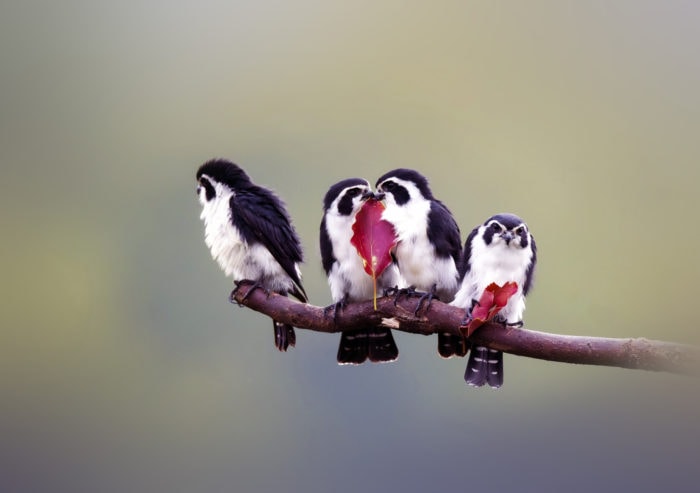
(Image credit: Wang LiQiang)




